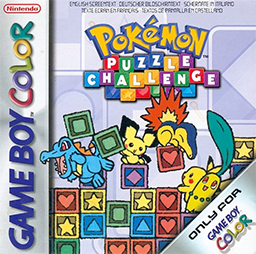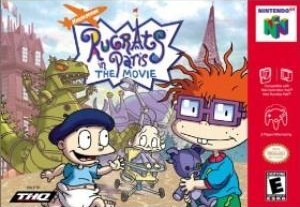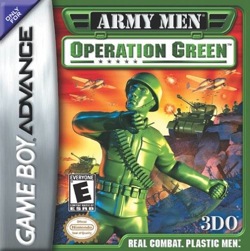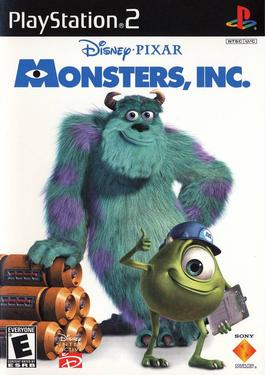
Mario Tennis is a 2000 sports video game developed by Camelot Software Planning and published by Nintendo for the Nintendo 64 (N64). Following Mario's Tennis, it is the second game in the Mario Tennis series. The game is known for being the introduction of Luigi's arch-rival, Waluigi, and the re-introduction of Princess Daisy and Birdo.

Donald Duck: Goin' Quackers is a 2000 platform game developed and published by Ubi Soft for various consoles and Windows-based personal computers. A version with the same title was released for the Game Boy Color, before it was retitled Donald Duck Advance for the Game Boy Advance. Reviews praised the music, backgrounds and animations, noting the short length and low difficulty as more fun for children.

Grand Theft Auto 2 is an action-adventure game developed by DMA Design and published by Rockstar Games in October 1999 for the PlayStation and Windows, and the Dreamcast and Game Boy Color in 2000. It is the sequel to 1997's Grand Theft Auto, and the second main instalment of the Grand Theft Auto series. Set within a retrofuturistic metropolis known as "Anywhere City", the game focuses on players taking the role of a criminal as they roam an open world, conducting jobs for various crime syndicates and having free rein to do whatever they wish to achieve their goal. The game's intro is unique for a title in the series, as it involved live-action scenes filmed by Rockstar Games.

Sonic Advance is a 2001 platform video game developed by Sonic Team and Dimps and published by Sega for the Game Boy Advance. It was the first Sonic the Hedgehog game to be released on a Nintendo console with Sonic Adventure 2: Battle on the GameCube, and was produced in commemoration of the series' tenth anniversary. The story follows Sonic, Tails, Knuckles, and Amy as they journey to stop Doctor Eggman from taking over the world. Controlling a character, players are tasked with completing each level, defeating Eggman and his robot army, and collecting the seven Chaos Emeralds.

Pokémon Puzzle Challenge is a puzzle video game developed by Intelligent Systems and published by Nintendo for the Game Boy Color. Released in Japan on September 21, 2000; in North America on December 4, 2000; and in PAL regions on June 15, 2001, it is the second Pokémon-themed entry in the Puzzle League series. While its Nintendo 64 counterpart Pokémon Puzzle League is visually based on the Pokemon anime, Puzzle Challenge instead draws inspiration from the Pokémon Gold and Silver games. The game features multiple modes of play and support for competitive play between two players. Puzzle Challenge was later digitally re-released via the Nintendo 3DS's Virtual Console line on November 6, 2014.

Men in Black: The Series is an American animated television series that originally aired on Kids' WB from October 11, 1997, to June 30, 2001.

Rugrats in Paris: The Movie is a video game based on the 2000 animated movie of the same name. The game follows the adventures of the Rugrats in a European theme park. A console version of the game was released in 2000, for the PlayStation, Nintendo 64, and a handheld version for Game Boy Color. A version for Microsoft Windows was later released in 2001. The console version's gameplay is similar to Rugrats: Studio Tour, but Paris’ attractions sometimes have minigames too. The handheld gameplay is a side-scrolling platformer. The Windows version's gameplay is an adventure game in which the player must find Chuckie's Wawa Bear.

Mat Hoffman's Pro BMX is a 2001 BMX video game developed by Shaba Games and the first game to be published by Activision under the Activision O2 label. It is similar to the Tony Hawk's series and competed directly with Acclaim Entertainment's Dave Mirra Freestyle BMX. Despite a planned release in fall of 2000, the game was released in 2001 for the PlayStation and Game Boy Color, followed by Dreamcast, Microsoft Windows and Game Boy Advance. The PlayStation and Dreamcast versions received "favorable" reviews, while the PC and Game Boy Advance versions received "average" reviews. A sequel, Mat Hoffman's Pro BMX 2, was released in 2002.

Perfect Dark is a 2000 action game developed and published by Rare for the Game Boy Color. As a direct prequel to its Nintendo 64 counterpart, the game follows agent Joanna Dark as she completes her training at the Carrington Institute research centre and uncovers information against rival corporation dataDyne. The gameplay revolves around shooting opponents and completing objectives such as rescuing hostages or recovering items. The game also includes a multiplayer mode where two players may compete against each other in several deathmatch modes.

Toy Story 2 is a 1999 side-scrolling platform game for Game Boy Color based on the film of the same name. The game was developed by Tiertex Design Studios and published by THQ. It was released in November 1999 in North America with the European version releasing the following year. The premise of the game loosely follows the original film with players taking control of Buzz Lightyear on a mission to rescue Woody by traversing through stages.

Commander Keen is a side-scrolling platform video game developed by David A. Palmer Productions and published by Activision in June 2001 for the Game Boy Color. Part of the Commander Keen series, it was released ten years after the first seven episodes in 1990–91. The game follows the titular Commander Keen, an eight-year-old child genius, as he journeys through three alien worlds to collect three plasma crystals to prevent the weapon they power, built by several enemies from previous games, from destroying the universe. The game features Keen running, jumping, and shooting through various levels while opposed by aliens, robots, and other hazards.

Toy Story Racer is a 2001 kart racing game developed by Traveller's Tales and Tiertex Design Studios and published by Activision. It was based on the Toy Story franchise, primarily the first film. The game was released in March 2001 for the Game Boy Color and PlayStation systems. The PlayStation version received "generally favorable reviews" according to Metacritic. In 2010, the PlayStation version was re-released on the PlayStation Store as a PS one Classic.

Army Men: Operation Green is a top-down shooter video game developed by Pocket Studios and published by The 3DO Company exclusively for the Game Boy Advance. It was released in North America on December 3, 2001 and in Europe on March 15, 2002. It is part of the Army Men series of video games created by The 3DO Company, which is based on army men toys. It is the second game in the series for the Game Boy Advance, after the 2001 release, Army Men Advance.

Monsters, Inc. is a 2001 platform video game based on the 2001 film of the same name released for Game Boy Color, Game Boy Advance, and PlayStation 2. The Game Boy Color and Game Boy Advance versions of the game were released in October 26, 2001, in North America and in February 1, 2002, in Europe. The PlayStation 2 version was only released in North America in March 20, 2002. The Game Boy Advance version was also released on a twin pack cartridge bundled with Finding Nemo in 2005.

Crawfish Interactive was a video game developer based in Croydon, London, United Kingdom.

Wendy: Every Witch Way is an action platform video game published by TDK Mediactive and developed by WayForward Technologies for the Game Boy Color in 2001. The game centers on Wendy the Good Little Witch from the Casper the Friendly Ghost series. Wendy accidentally opens her aunts' chest containing magical stones, which upset the gravity of a floating castle that crashes onto her house. The player controls Wendy through four worlds with sixteen levels, with each world having three side-scrolling levels and one horizontal shooter stage. Inserting the game in the Game Boy Advance unlocks a new world exclusive to the console.

Men in Black 2: The Series is an action video game developed by David A. Palmer Productions and published by Crave Entertainment for the Game Boy Color. It is based on the animated television series, Men in Black: The Series, and is a sequel to the 1999 video game of the same name. Crave Entertainment announced the game in March 2000, and released it in the United States in July 2000.


















